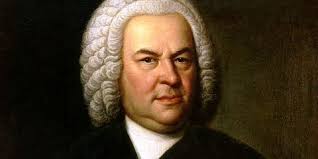Among the towering masterpieces of Western classical music, few works have achieved the spiritual and artistic magnitude of Johann Sebastian Bach’s St Matthew Passion (Matthäus-Passion, BWV 244). This monumental oratorio, composed in the early 18th century, stands as a profound expression of faith, emotion, and compositional genius.
Origins and Commission
Bach composed the St Matthew Passion during his tenure as Kantor (music director) of the Thomasschule in Leipzig, a position he held from 1723 until his death in 1750. The work was intended for performance on Good Friday, the most solemn day in the Christian liturgical calendar, at St. Thomas Church (Thomaskirche) in Leipzig.
The first performance took place on April 11, 1727, though some scholars argue that the 1729 version is the earliest complete one we can trace with more certainty. The libretto was written by Christian Friedrich Henrici, known by his pen name Picander, a frequent collaborator of Bach. It draws primarily from the Gospel of Matthew, chapters 26 and 27, interspersed with reflective arias and chorales.
Structure and Forces
The St Matthew Passion is remarkable for its grand scale and deeply emotive character. Bach scored the work for two choirs, two orchestras, and six principal soloists, along with a boys’ choir for the chorales. The double choir and orchestra arrangement allowed for rich interplay and dramatic contrast between the groups, enhancing the theatrical and spiritual depth of the narrative.
The role of the Evangelist, typically sung by a tenor, narrates the Gospel text in the style of recitative. Jesus, portrayed by a bass, and other characters such as Peter, Pilate, and the high priests are also voiced by soloists. The reflective arias and chorales offer moments of personal meditation and communal expression, inviting the listener to engage deeply with the Passion story.
Theological and Musical Depth
Bach’s St Matthew Passion is not merely a musical retelling of biblical events—it is a profound theological meditation. The music conveys a wide spectrum of emotions, from sorrow and betrayal to hope and redemption. The opening chorus, Kommt, ihr Töchter, helft mir klagen (“Come, ye daughters, help me lament”), immediately sets the tone for a journey of introspection and devotion.
Throughout the work, Bach employs musical symbolism and word painting to underscore the text’s meaning. For example, dissonances reflect pain and suffering, while gentle arpeggios often symbolize grace or the divine presence. Chorales—simple hymns sung by the congregation—anchor the narrative, offering familiarity and emotional connection.
Reception and Rediscovery
Despite its brilliance, the St Matthew Passion fell into obscurity after Bach’s death. It wasn’t until 1829, almost a century later, that the work was revived by Felix Mendelssohn in Berlin. This performance is widely credited with sparking the Bach revival of the 19th century and restoring Bach’s reputation as one of the greatest composers in history.
Since then, the St Matthew Passion has become a central pillar of choral repertoire, performed regularly in churches and concert halls around the world, especially during Holy Week.
Legacy
Today, St Matthew Passion is revered not only as a musical masterpiece but also as a spiritual and cultural treasure. It showcases Bach’s unmatched ability to blend drama, devotion, and musical complexity into a unified and deeply moving experience.
Whether heard in the solemnity of a cathedral or the intimacy of a concert setting, Bach’s St Matthew Passion continues to inspire awe, reflection, and a profound sense of the divine.


Comments are closed